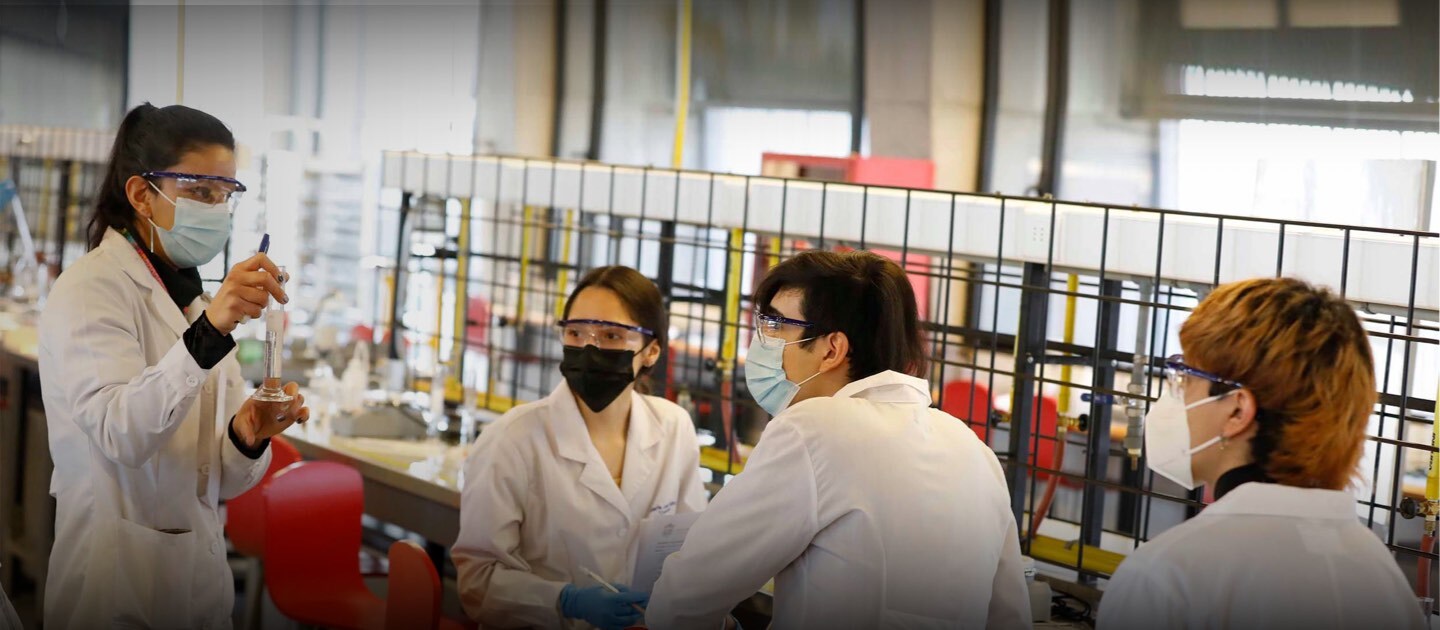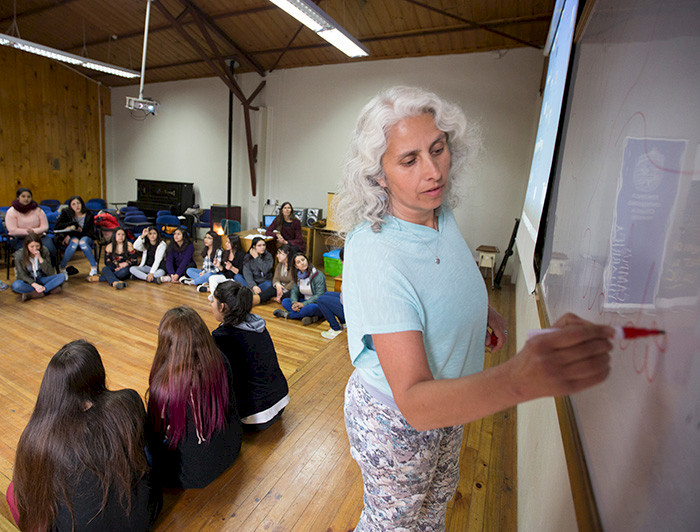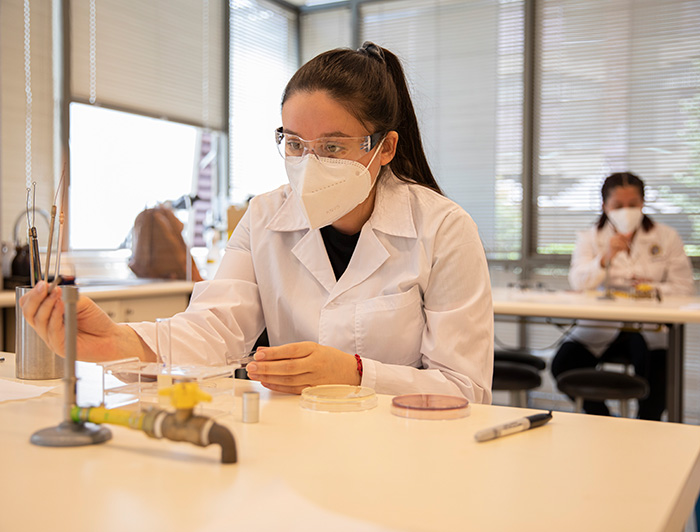
UC Chile Plans to Bridge the Gender Gap in Research
At the heart of the InES Gender Program is ensuring equal career advancement for women and men in research, evenly distributing workloads, and promoting female faculty leadership at different levels. Keep reading to find out how.

photo_camera The goal of the InES Gender Project, which is promoted by the Office of the Vice President for Research and Office of the Vice President of Academic Affairs, is to reduce the gender gap in the world of research and academia. (Photo by: Karina Fuenzalida)
Despite all the progress made and all the ground conquered, there is still quite an evident gender gap in science and research in Chile.
And if you think universities are the exception, you would be wrong.
According to a study from our university's Gender Equality and Academic Development offices, which analyzed academic hiring between 2015 and 2019, there is still a ways to go.
The study found a significant gap: only 30% of new hires within that period were women.
And that’s not all.
The low proportion of women in the university's regular staff—only 31% in 2020—could partly explain the lack of female leadership in Fondecyt projects, applied R&D, and associative research. Between 2016 and 2020, the UC Chile was awarded:
- 506 Fondecyt Regular projects, of which only 25% were led by women.
- 203 Fondecyt Iniciación projects, of which 38% were led by women.
- 21 Rings and Nuclei associative projects, of which 33% were led by women.
Faced with this reality, the UC Chile is promoting a plan to reduce the gender gap in the world of research.
That is the heart and soul of the InES Gender Project (INGE210011) – [In Spanish, InES stands for Innovation in Higher Education]— for which the university has been awarded three years of funding from the National Research and Development Agency (ANID, as per its Spanish acronym).
Led by the Offices of Research and Gender Equality, the project seeks, within the scope of R&D&I+E (research, development, innovation, and entrepreneurship), to:
- Ensure equal career advancement in research
- Develop workshops on implicit gender biases
- Promote co-responsibility and even distribution of workloads
- Promote female faculty leadership at different levels
All this, within the scope of R&D&I+E (research, development, innovation, and entrepreneurship).
This is an initiative promoted by the Office of the Vice President for Research and the Office of the Vice President of Academic Affairs. Silvana Zanlungo, director of Gender Equality and Academic Development, explained that the plan will have two main focuses:
- Implementing actions to ensure horizontal and vertical equality in the academic career advancement of men and women.
- Developing strategies “to ensure an even workload distribution in academic career tasks for both men and women.”
It is not enough to be a "leading research and development institution," said Pedro Bouchon, Vice President for Research.
“We must develop actions and strategies aimed at reducing the gaps detected in the academic and scientific fields and, above all, raise awareness in the community regarding the importance of promoting female participation in R&D&I+E projects and in strategic positions.”
From his perspective, this is the way to promote a more equitable and co-responsible culture.
María Elena Boisier, Director of Research, is leading the InES Gender Project and will work with the universities of Birmingham (England) and Magallanes.
In terms of funding, ANID has provided $448,000,000 pesos (about $521,000 US dollars) for the project.
For its part, the University of Birmingham will share initiatives it has led to reduce the gender gap.
Meanwhile, Universidad de Magallanes will host training workshops to advance in this area.
“It often takes a lot of pushing for structural changes to be made. Despite the progress and efforts made by the university in the area of gender, it is still not enough,” said Boisier.
The Roadmap

This is a formidable challenge.
To tackle it, the InES Gender Project plans to:
- Install a "talent incubator" program
- Create a mentoring program to foster leadership in R&D&I+E projects, focused on female faculty at the university
- Design assessment tools that include a gender perspective for internal research competitions
- Establish two research support competitions
One competition will focus on faculty members who are caregivers, and the other on research on gender issues, gender violence, or seeking to incorporate the gender approach in interdisciplinary research and artistic creation, among others.
"The project includes training and education on implicit biases, stereotypes and gender violence. This will have an impact on the progress towards a more equitable and inclusive university culture, making it possible to incorporate a gender approach into research, development, innovation, and entrepreneurship processes, both in design and implementation," said Pilar Bontá, head of the Gender Equality Department.
For Bontá, winning this type of project is a key contribution to the "process of institutionalizing the gender approach in the university and, particularly, to advance gender mainstreaming in the academic and research spheres.”
Her expectation is that the InES Gender Project will help to raise awareness of gender inequalities by making the existing gaps in the production of knowledge and in academic careers more visible.
What is gender mainstreaming?
According to the publication “Education for Gender Equality” (in Spanish), published by the Gender Equality Unit of the Ministry of Education, it means reflecting on and assessing the effects that actions and decisions made in any area of society have on men and women.
The ultimate goal is to benefit both men and women equally, with measures that promote the reduction of inequalities and the redistribution of power.


